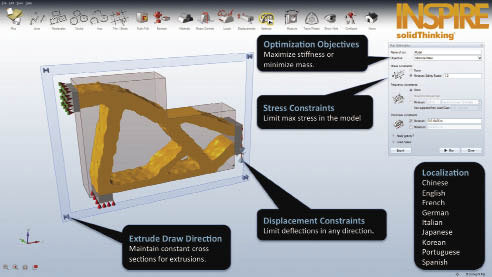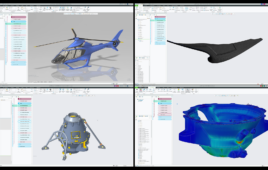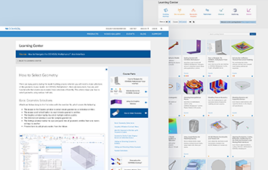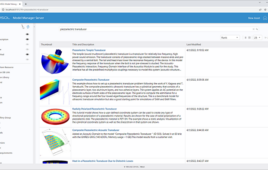Most of the big CAE vendors are enthusiastic proponents for the democratization of simulation. In fact, Googling the term leads to a treasure trove of results—and shows that each of the CAE vendors seem to have entirely different ideas about what democratization involves.
While everyone seems to agree that democratization involves making simulation more available (particularly to designers), and more usable earlier in the development process, they don’t necessarily agree on many of the details.
The problem I see is that there are some fundamental requirements to make this democratization idea work: First, you need to offer something that designers actually need; second, you need to offer something that designers can actually get good results with; and third, you need to offer something that actually helps those designers do their job better.
At the risk of sounding cynical, let me give some examples of things that haven’t worked as well as the vendors would have liked. I’ll start with the example of CFD. First, many designers don’t need CFD. Second, many designers don’t have the knowledge required to know whether or not they’re getting good results with CFD. And, third, many designers don’t see CFD as their job—they see it as an analyst’s job. The situation with FEA is somewhat better, as being able to run linear static analyses while designing a part can be pretty helpful to designers. Still, most designers struggle with figuring out boundary conditions, and determining whether a part requires linear or non-linear analysis (but then, analysts have been known to struggle with these issues too.)
While I’m actually a big fan of moving simulation up in the product development process, I don’t think any of today’s CFD or FEA programs are likely to be the killer-apps for upfront simulation. Rather, I think structural topology optimization might be it. If only more people knew what it was.
The best way to understand topology optimization is to compare it to FEA. With FEA, you define the shape of a part, add loads and constraints, then run the simulation, to see if you got the shape right. With topology optimization, you define the loads and constraints, specify what space the part has to fit into, then, when you run the simulation, the software will tell you what shape the part should be in order to satisfy constraints like minimum weight or maximum stiffness. It is the opposite of FEA.

solidThinking Inspire
Altair pioneered topology optimization in their high-end OptiStruct product. It was, and is, an impressive tool, designed with the kind of flexibility and power that professional analysts need. It is routinely used in industries, such as aerospace and automotive, where efficient structures are important.
In 2008, Altair acquired solidThinking, a developer of CAD software for industrial designers. By combining the topology optimization capabilities of OptiStruct with the modeling capabilities of solidThinking, Altair was able to create solidThinking Inspire, a purpose-built topology optimization tool, that can be used by design engineers during the conceptual design phase of a project, before they start building precision CAD models.
One of the things that makes solidThinking Inspire a particularly good tool is that it doesn’t include too much CAD. It includes just enough geometric modeling to define the design space for any part you might want to create. So, the software is usable by people who aren’t CAD experts, with very little training required. It allows for quick and easy exploration of design concepts. While users do need to understand basic engineering concepts to apply loads and constraints (including goals for stiffness and weight), they don’t need to know anything about meshing, or other FEA-related topics.
The solving process in solidThinking Inspire is quick and transparent. It varies the density of the material in the model, removing it from regions where it is not necessary to carry loads. The resulting model looks like a cross between something organic, and something that has been eroded or rusted away. But, as odd as the shapes may look at first, they are quite functional. They can be imported into any CAD system, and used as a form over which a well-structured (and much more attractive) native CAD file can be built.
solidThinking Inspire provides first-time-right CAD-ready designs that meet performance requirements while eliminating redesign cycles. Traditional CAE simulation can be used to validate the designs, and Altair Optistruct can be used for further optimization.

The future of optimization
Topology optimization is just one form of optimization, and a rather simple one at that. At the other end of the spectrum in complexity is multidisciplinary design optimization (MDO), which allows the integration of multiple solvers, and often requires massive computer resources to run. The thing that all forms of optimization have in common is that they start with a design space, and a set of optimization criteria, and ultimately give you an optimal form to use as a starting place for your design.
Over time, it’s not too likely that MDO will make a lot of headway in the area of democratizing simulation, because it’s inherently a tool for analysts and those who have the expertise to setup coupled simulations. But topology optimization, in a form that can be used by design engineers (rather than just analysts) appears to already be there.
Altair
www.altair.com
solidThinking
www.solidthinking.com
Filed Under: Software • 3D CAD





Tell Us What You Think!